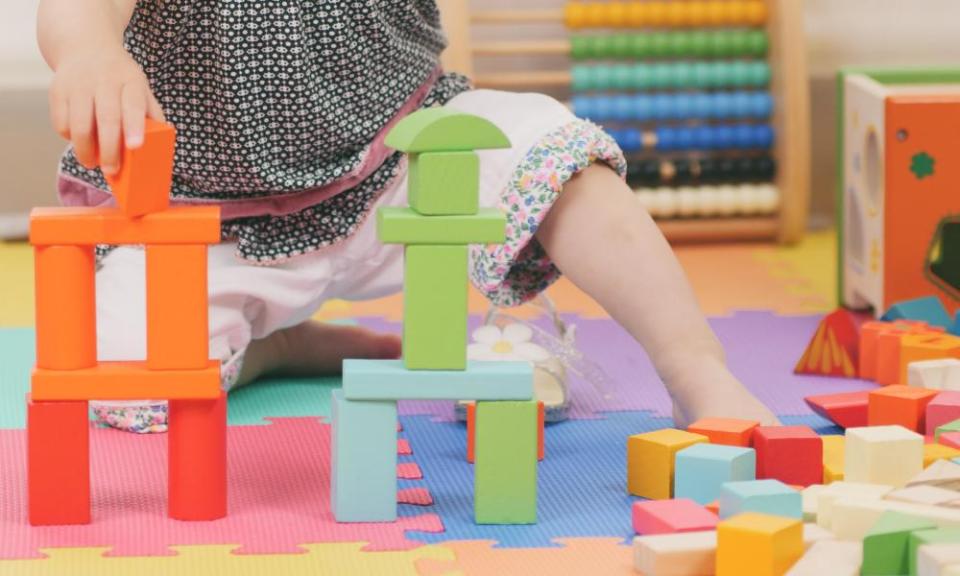‘The house turned into an op shop!’ How to host a pre-Christmas stuff swap
Christmas is fast approaching, but you could be forgiven for wanting to slow down your purchases. With the rise of the mindful, minimal-waste consumer, many are looking for gift-giving options that don’t cost the earth. Enter, the pre-Christmas stuff swap.
At a stuff swap, one person’s trash is another’s stocking stuffer. Pre-loved clothes, toys and books are fair game, provided they’re in good, regiftable condition.
The Clothing Exchange, which runs swap events across Australia, has seen a surge in demand this year. “It’s absolutely exploded,” says national coordinator Kirsten Fredericks. Before the pandemic, it was a bumper year if they hosted 10 swap events; in 2022, they’ve run more than double that amount. And swappers aren’t just browsing for themselves – they’re seeking gifts for friends and family.
As with many social situations, there are unwritten rules, guidelines and etiquette that go with a stuff-swap. Last year, I hosted my own stuff swap in the lead-up to Christmas and so, based on that event and with some expert advice, here are the golden rules to making your stuff-swap a success.
Make a date
Compare calendars with your keenest friends to ensure you have a core group of swappers. Aim for November, or early December, as people are less busy, and less likely to have started shopping.
If you have children, make sure you hold it after their bedtime (or at least away from their watchful gazes).

When it comes to the invitation list, don’t worry if your guests don’t know each other. I ended up with about 20 friends from different social circles, but their mutual swapping enthusiasm meant they got along wonderfully.
Related: ‘Leave it until the morning after’: how to properly wash wine glasses
Prepare (or pre-buy) some light refreshments, or you can ask guests to contribute. On the day, make sure you clear your tables of your incidental household items (in case your favourite coasters are mistaken as swap-fodder). Then let the fun begin.
My friend Amy remembers the joy and conviviality of my swap. “The house turned into an op shop, it was amazing!” She also recalls an “atmosphere of generosity” – there was no snatching. In fact, guests took to offering around items before claiming them.
Make the rules fair
There are two goals: to purge unwanted gift-worthy items, and to acquire gift-worthy items. It’s about quality, not quantity.

Fredericks encourages swappers to think: “Would I want this if I saw it in the swap? Would I consider this good enough?” She says clothes should not have any holes or stains, toys should be in working order, and sets – such as crockery sets – should be complete.
For secondhand children’s gifts, sturdy toys like building blocks and toy cars, make ideal swap material.
It helps to set expectations regarding how the swap will work well in advance. Because my guests were all friends, I suggested a casual approach: no literal swapping, just a communal collection of gift-worthy items we would all contribute to, and all help ourselves to.
At swaps hosted by the Clothing Exchange, guests swap items for tokens upon entry, then use them to “purchase” goods. For bigger groups or office swaps, this model works well.
What to do with any leftover items
The idea of a swap is not to accrue more unwanted items, so if there are unswapped items remaining, don’t be caught out.
Ask the last of your guests to help load your car, then drop the items at at your local op shop the next day. (You may need to call ahead to check whether they’re currently accepting donations.)
How to give your secondhand gift
In the three years since co-owner Bec Taylor opened her Hobart vintage co-op, The Finders, the number of customers looking for secondhand gifts has risen steadily. Customers come in search of items that are unique and built to last; some are even seeking secondhand wedding presents. She says the recycled nature of a gift isn’t something to hide; it’s a selling point.

When it comes to the actual giving, it helps when items are thoughtfully presented. She suggests adding a ribbon, a flower, or a homemade tag; perhaps slotting in a nursery voucher to a gardening book, a feather to a vase. You could also detail the story of the “find” in the card. These little details result in a gift that’s more meaningful than one that was bought new.
About a week after my swap, one of my friends posted a photo of six beautifully wrapped gifts to our social media event page, with a comment about how satisfying it was to have so many Christmas presents sorted, without contributing to landfill.
Later, she said her son wasn’t phased by the secondhand nature of his books. In fact, when he found out their previous owner was an older child he knew and admired, this added to their value.
A quick straw poll of friends and family who didn’t attend the swap revealed many wouldn’t mind being given a secondhand gift, provided it is in good condition and selected with the recipient in mind. In the words of my friend Jacinta, the best pre-loved item is “a gift I would really love, and not just someone cleaning [out] the cupboard”.
A word of warning …
But heed this cautionary tale from my great-aunt. Somebody once gave her a lovely china cup-and-saucer set, but as she already had a bountiful china collection, she gave it to a colleague. “The girl was very charming about it. She said, ‘Gee, I like the gift you gave me … but there was still a card in it’.” The card was not addressed to the colleague, but to my great aunt. “This happened in the 60s, and I still remember the embarrassment!”


